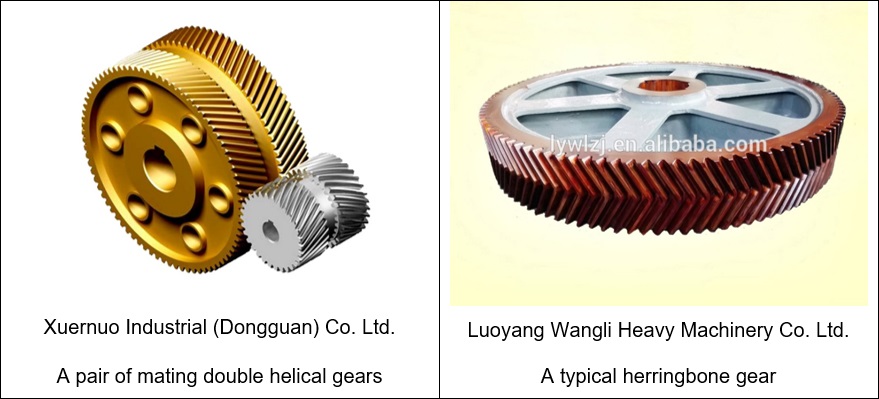In helical gears, teeth are cut at an angle (called helix angle) with the gear axis in the form of helix on the cylindrical gear blank. It replaces sudden engagement and disengagement of teeth (as in spur gear) by gradual mating and thereby reduces wear, vibration and noise. However, a pair of mating helical gears induces axial thrust force that is ultimately transferred to the bearings, which necessitates bulky and costly bearings. In order to eliminate this thrust force on bearings, two identical helical gears having same module and number of teeth and are joined on same axis but having teeth in opposite directions (one has left hand helix and other one has right hand helix) can be employed. While joining two helical gears, a small gap is sometimes maintained in between them. Primarily based on the presence or absence of this intermediate gap, two varieties of the helical gear have evolved—double helical gear and herringbone gear.
Although both are frequently used interchangeably, they are not exactly same. However, they serve same purpose and offer similar benefits as compared to single helical gear. In case of double helical gear, sufficient relief gap is provided between two identical helical gears having opposite hand of helix. It is easy to fabricate and cheaper. In case of herringbone gear, no such gap is provided. Thus two identical helical gears with opposite hand of helix physically touch each other. Its fabrication is complicated due to chance of immersion into the other halve and requires special type cutter for cutting the gear teeth. In both the cases, axial thrust force developed in one helical gear is opposite in direction to the thrust force developed in another helical gear. Thus the resultant thrust force becomes zero. Various similarities and differences between double helical gear and herringbone gear are given below in table form.

Similarities between double helical gear and herringbone gear
- In both the cases, two helical gears must have same module, same number of teeth and same helix angle but opposite hands of helix.
- Both gears are capable of eliminating thrust force on bearings. So their purposes are same.
Differences between double helical gear and herringbone gear
| Double Helical Gear | Herringbone Gear |
|---|---|
| In double helical gear, a small gap is maintained by cutting a groove between two identical helical gears with opposite hands of helix. | In herringbone gears, no such gap is provided between two identical helical gears with opposite hands of helix. |
| Hobbing, a high productive gear cutting process, can be advantageously used for cutting double helical gears. | Hobbing is not preferred process for cutting herringbone gears as the hob (cutter) can run over the other half in the same way because of no gap. It is usually cut by gear shaper, which is a slow process. |
| Due to intermediate gap in between two helical gears, it requires more axial space. | Less axial space is required for same power transmission requirement. |
References
- Introduction to Machine Design by V. B. Bhandari (McGraw Hill Education India Private Limited).